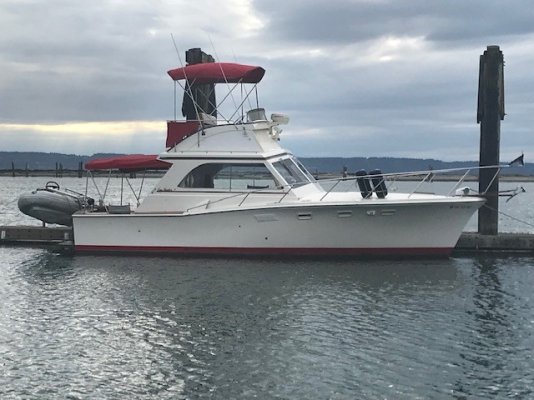RonR
Guru
So lets say I was looking to buy a larger boat some day. Say the boat was a 1988 Ocean 48' Convertible with twin 485hp 671's. Packs around 580 gallons of fuel. Lets assume all systems are good and rebuilt engines, also has a water maker Boat is located in San Diego CA. and I want it in Seattle WA.
I have never done anything outside of the Puget Sound so if it was to go on its own bottom figure a pro would do it and I would tag along for fun. But how do you even start planning for a trip like that? Or would it be better to ship by truck?
What do you figure for average speed going North in a way to make time but easy on the boat/crew/fuel bill/stops. Most of my local Puget Sound trips I figure my egg at 10mph and at 12 gallons per hour and keep 1/4 or more in the tank for reserve. Yes this is cutting it close, but most fuel stops are within a 1/4 tank of fuel from most places I travel. Yes the boat can do close to 30mph at 20 gallons per hour, but no one is having any fun going that fast for more than about 10 min.
https://www.yachtworld.com/boats/1988/ocean-48-convertible-super-sport-3605124/
No this is not something I am planning to do now, but in a year or two with something in this size/condition/price point, and will prob be located in San Fran or San D for this style of boat. Just something I was thinking about.
I have never done anything outside of the Puget Sound so if it was to go on its own bottom figure a pro would do it and I would tag along for fun. But how do you even start planning for a trip like that? Or would it be better to ship by truck?
What do you figure for average speed going North in a way to make time but easy on the boat/crew/fuel bill/stops. Most of my local Puget Sound trips I figure my egg at 10mph and at 12 gallons per hour and keep 1/4 or more in the tank for reserve. Yes this is cutting it close, but most fuel stops are within a 1/4 tank of fuel from most places I travel. Yes the boat can do close to 30mph at 20 gallons per hour, but no one is having any fun going that fast for more than about 10 min.
https://www.yachtworld.com/boats/1988/ocean-48-convertible-super-sport-3605124/
No this is not something I am planning to do now, but in a year or two with something in this size/condition/price point, and will prob be located in San Fran or San D for this style of boat. Just something I was thinking about.


